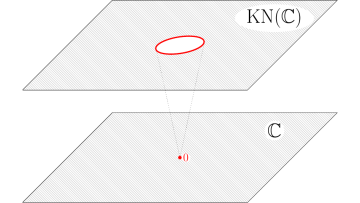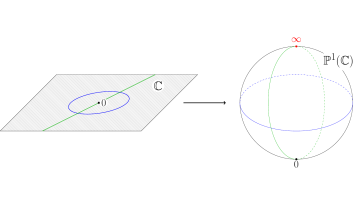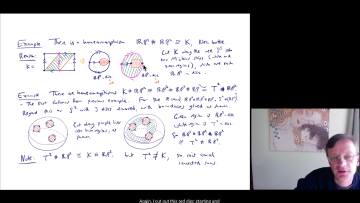Oxford Mathematcian Clemens Koppensteiner talks about his work on the geometry and topology of compactifications.
Our 'Fantastic Voyage' through Oxford Mathematics Student Lectures brings us to four 3rd Year lectures by Dominic Joyce on Topological Surfaces. These lectures are shown pretty much as they are seen by the students (they use a different platform with a few more features but the lectures are the same) as we all get to grips with the online world. Lectures on Linear Algebra, Integral transforms, Networks, Set Theory, Maths History and much more will be shown over the next few weeks.
14:00
Hashing embeddings of optimal dimension, with applications to linear least squares
Abstract
We investigate theoretical and numerical properties of sparse sketching for both dense and sparse Linear Least Squares (LLS) problems. We show that, sketching with hashing matrices --- with one nonzero entry per column and of size proportional to the rank of the data matrix --- generates a subspace embedding with high probability, provided the given data matrix has low coherence; thus optimal residual values are approximately preserved when the LLS matrix has similarly important rows. We then show that using $s-$hashing matrices, with $s>1$ nonzero entries per column, satisfy similarly good sketching properties for a larger class of low coherence data matrices. Numerically, we introduce our solver Ski-LLS for solving generic dense or sparse LLS problems. Ski-LLS builds upon the successful strategies employed in the Blendenpik and LSRN solvers, that use sketching to calculate a preconditioner before applying the iterative LLS solver LSQR. Ski-LLS significantly improves upon these sketching solvers by judiciously using sparse hashing sketching while also allowing rank-deficiency of input; furthermore, when the data matrix is sparse, Ski-LLS also applies a sparse factorization to the sketched input. Extensive numerical experiments show Ski-LLS is also competitive with other state-of-the-art direct and preconditioned iterative solvers for sparse LLS, and outperforms them in the significantly over-determined regime.
A link for this talk will be sent to our mailing list a day or two in advance. If you are not on the list and wish to be sent a link, please contact @email.
14:00
Fast randomized linear solver
Abstract
We propose a randomized algorithm for solving a linear system $Ax = b$ with a highly numerically rank-deficient coefficient matrix $A$ with nearly consistent right-hand side possessing a small-norm solution. Our algorithm finds a small-norm solution with small residual in $O(N_r + nrlogn + r^3 )$ operations, where $r$ is the numerical rank of $A$ and $N_r$ is the cost of multiplying an $n\times r$ matrix to $A$.
Joint work with Marcus Webb (Manchester).
A link for this talk will be sent to our mailing list a day or two in advance. If you are not on the list and wish to be sent a link, please contact @email.
Analysis of temporal event sequences: challenges and opportunities in healthcare
Abstract
Our society is witnessing an exponential growth of data being generated. Among the various data types being routinely collected, event logs are available in a wide variety of domains. Despite historical and structural digitalisation challenges, healthcare is an example where the analysis of event logs might bring a new revolution.
In this talk, I will present our recent efforts in analysing and exploring temporal event data sequences extracted from event logs. Our visual analytics approach is able to summarise and seamlessly explore large volumes of complex event data sequences. We are able to easily derive observations and findings that otherwise would have required significant investment of time and effort. To facilitate the identification of findings, we use a hierarchical clustering approach to cluster sequences according to time and a novel visualisation environment. To control the level of detail presented to the analyst, we use a hierarchical aggregation tree and an Align-Score-Simplify strategy based on an information score. To show the benefits of this approach, I will present our results in three real world case studies: CUREd, Outpatient clinics and MIMIC-III. These will respectively cover the analysis of calls and responses of emergency services, the efficiency of operation of two outpatient clinics, and the evolution of patients with atrial fibrillation hospitalised in an acute and critical care unit. To finalise the talk, I will share our most recent work in the analysis of clinical events extracted from Electronic Health Records for the study of multimorbidity.
Control and optimization of Natural Killer Cell activation using mathematical models
Abstract
Natural killer (NK) cells are part of the innate immune system and are capable of killing diseased cells. As a result, NK cells are being used for adoptive cell therapies for cancer patients. The activation of NK cell stimulatory receptors leads to a cascade of intracellular phosphorylation reactions, which activates key signaling species that facilitate the secretion of cytolytic molecules required for cell killing. Strategies that maximize the activation of such intracellular species can increase the likelihood of NK cell killing upon contact with a cancer cell and thereby improve efficacy of NK cell-based therapies. However, NK cell exhaustion, a phenotype characterized by reduced effector functionality, can limit the NK cell’s capacity for cell lysis. Due to the complexity of intracellular signaling, it is difficult to deduce a priori which strategies can enhance species activation.
To aid in the development of strategies to enhance NK cell activation and limit the NK cell exhaustion, we constructed a mechanistic model of the signaling pathways activated by stimulatory receptors in NK cells. We then extended the model to describe the dynamics of the cytolytic molecules granzyme B (GZMB) and perforin-1 (PRF1). We implemented an information-theoretic approach to perform a global sensitivity analysis and optimal control theory to investigate strategies to enhance intracellular signaling and maximize GZMB and PRF1 secretion. We recently expanded the modeling to investigate the role of NK cell heterogeneity on tumor cell killing. In total, we developed a theoretical framework that provides actionable insight into engineering robust NK cells for clinical applications.
Machine learning and the protein folding problem
Abstract
The amazing results of DeepMind's AlphaFold2 in the last CASP experiment caused a huge stir in both the AI and biology fields, and this was of
course widely reported in the general media. The claim is that the protein folding problem has finally been solved, but has it really? Not
to spoil the ending, but of course not. In this talk I will not be talking (much) about AlphaFold2 itself, but instead what inspiration we
can take from it about future directions we might want to take in protein structure bioinformatics research using modern AI techniques.
Along the way, I'll illustrate my thoughts with some recent and current machine-learning-based projects from my own lab in the area of protein
structure and folding.





